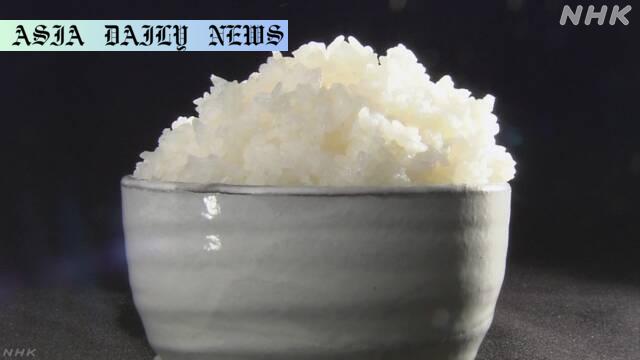Inflation: Japan’s CPI rises 3.2% in March, rice prices surge 92% year-on-year, highlighting record-breaking trends in food costs.
Japan’s CPI rose by 3.2% in March from a year earlier.
Rice prices recorded a historic 92.1% year-on-year increase.
The CPI has been at or above 3% for four consecutive months.
The Bank of Japan’s inflation target has been exceeded for the third year.

Japan’s Inflation Hits 3.2% in March
In March, Japan’s consumer price index (CPI) saw an annual increase of 3.2%. This marks the fourth consecutive month where inflation has been at or above 3%. The rise indicates continuing inflationary pressure in Asia’s second-largest economy. Excluding the prices of fresh food, inflation was also notable, coming in at 0.2 percentage points higher than February. The persistent inflation underscores challenges faced by policymakers in balancing monetary policy and consumer affordability.
Historical Surge in Rice Prices
Japan’s staple food, rice, has seen an unprecedented price surge. The price of rice increased by a historic 92.1% year-on-year, marking the highest jump since comparable data became available in 1971. This significant increase in rice prices reflects broader issues within the supply chain, coupled with inflationary pressures on basic commodities. Further emphasizing the impact on daily life, onigiri rice balls now cost 15% more, and restaurant sushi prices have risen by 4.7%. The six-month trend of rising rice prices shows no signs of abating, raising concerns for both policymakers and consumers.
Exceeding Inflation Target for Three Consecutive Years
The Japanese government also reported that the CPI for fiscal 2024 rose by 2.7% compared to the previous year. This surpasses the Bank of Japan’s inflation target of 2% for the third straight year. The inflation target is widely regarded as a benchmark for healthy economic growth, yet consistent overachievement of the target indicates underlying economic issues that need to be addressed. As inflation impacts consumer purchasing power, it complicates efforts to boost spending and economic recovery following global economic challenges.
Broader Implications for Japan’s Economy
The ongoing inflation surge presents significant implications for the Japanese economy. Rising costs for essential items like rice heavily impact household budgets, particularly for low-income families. Moreover, these inflationary pressures may force businesses to reconsider pricing strategies, potentially leading to reduced demand and lower profit margins. Policymakers must navigate these challenges delicately, considering potential policy adjustments to curb inflation while supporting economic growth. The alignment between fiscal policies and consumer interests will be critical in stabilizing the situation.
Conclusion
Japan’s inflation data underlines the complexity of economic recovery in a post-pandemic world. The sharp rise in essential commodity prices, especially rice, emphasizes the urgent need for comprehensive policy responses aimed at easing inflationary pressures. Moving forward, it is essential to strike a balance between achieving economic growth and ensuring the affordability of daily necessities for the population. With continued vigilance and strategic interventions, Japan can work toward stabilizing its economy and addressing the challenges posed by inflation.



Commentary
The Unprecedented Rise in Rice Prices
The recent surge in rice prices in Japan is more than just a statistic—it is a stark reminder of how economic challenges are directly influencing the lives of ordinary people. As Japan’s staple food, rice holds cultural, historical, and economic significance, and an astonishing 92.1% year-on-year increase in its price represents an alarming wake-up call. This situation reflects broader global concerns about supply chain disruptions, raw material inflation, and the vulnerabilities of essential commodities to external factors.
Impacts on the Japanese Consumer
The impact of this inflation is most acutely felt by the average consumer, especially among middle and lower-income groups. For families that rely on rice as a daily dietary essential, such price surges challenge their ability to maintain a reasonable standard of living. It also leads to a ripple effect across the food industry, with rising costs for items like onigiri and sushi. Businesses too bear the brunt of this inflation, as they face the difficult decision of either absorbing the additional costs or passing them onto consumers who may already be stretched thin.
The Broader Economic Picture
Japan, like many other nations, faces a complex balancing act between controlling inflation and fostering economic growth. While exceeding the Bank of Japan’s 2% inflation target might indicate strong economic activity, the reality is more complicated. Persistent inflation often erodes purchasing power and reduces consumer confidence, making it harder for economies to recover. High inflation rates in essential goods contribute to financial strain for households and hinder overall demand, which can slow economic recovery efforts.
Looking Forward
The current inflationary trends highlight the importance of proactive policymaking. Japan’s government must implement targeted measures to stabilize essential commodity prices while addressing supply chain vulnerabilities. Policymakers could also explore subsidies for staple goods, enhance domestic production capabilities, or strengthen international trade partnerships. Meanwhile, transparent communication with the public regarding inflation management strategies can help maintain confidence and mitigate the psychological impacts of rising costs. Resolving these challenges will require collaboration between government, businesses, and consumers to ensure a more balanced and sustainable economy.